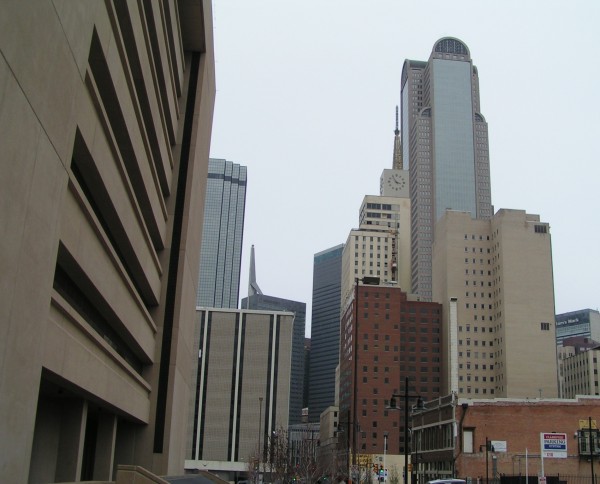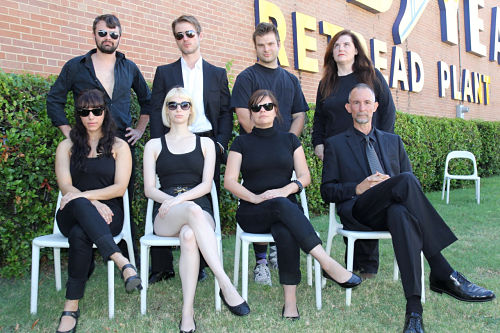It is no longer a secret. There is something happening with the Dallas art scene. There is a spirit moving upon previously hushed waters. Just last year, Christina Rees was exhorting young whippersnappers to fuck things up, and now they’re hanging out at RE Gallery with the mayor.
Over the past two years, the Do It Yourself movement has swept over Dallas, bringing energy, new artists taking creative risks, and a host of interesting art spaces and collectives. Yet to continue the growth of the Dallas art scene, Do It Yourself won’t be enough; we are going to have to start Doing It Together.

Much of the recent growth of the Dallas art scene can be attributed to the great recession. North Texas wasn’t as affected as other art centers; economic prospects dipped but they did not shatter. Talented artists who would have left Dallas to pursue careers in other places realized it was more economically viable to stay in Dallas. Artists who had finished MFAs elsewhere but had North Texas roots realized that their best bet might be to return home. Much of the talent that helped kick start Dallas’ recent DIY revolution never intended to be here. The recession brought to the city a concentration of young, energetic, like-minded creatives that it had previously lacked.
Even though Dallas was brighter than other areas, it still experienced a downturn in the arts. Between 2008 and 2010, dozens of contemporary art galleries closed their doors, and even the best had a couple very tough years. By 2011, we were left with old stalwarts like Barry Whistler and Conduit Gallery, who had mostly-full gallery rosters, and a bunch of new galleries starting to pop up, but very few galleries in the seven-to-fifteen year range that would typically support top MFA talent. These artists were stuck in Dallas and there weren’t enough respected gallery spaces to show them, so they decided to take matters into their own hands.

Although, S.C.A.B and the Art Foundation have gotten most of the press recently, I would suggest the first successful Dallas collective to come out of this post-recession landscape was In Cooperation With Muscle Nation, which came from an earlier collective, 14+1. Homecoming Committee was getting started at the same time and so was Oliver Francis Gallery, which might be best understood as a collective at this point. Then the Art Foundation happened. Then the collective of collectives, S.C.A.B happened. What makes S.C.A.B different is that their artists were mostly not originally from Dallas. They came to Dallas by choice, fresh from the Midwest and Northeast.
During this same time, new galleries and spaces (sometimes manned by the collectives) were opening: Cohn Drennan, Ro2, Cris Worley, Angstrom (round 2), The Power Station, Circuit 12, Red Arrow, W.A.A.S, Blow Up Gallery, Nerv Gallery, Studio DFTU, Homeland Security, RE Gallery, Black Lodge, That That, Fort Worth Drawing Center, Ash Studios, Two Bronze Doors, and more. Pop-up and temporary spaces dominated the landscape, and young artists in Dallas realized that they could get just as much notoriety showing in a dilapidated warehouse as in a pristine white cube.
This energy became infectious. Aurora was happening; semigloss. was happening; (wo)manorial was happening; East Dallas was happening; Cedars was happening; West Dallas was happening; Design District was happening; Deep Ellum was happening; Expo Park was happening; UTD CentralTrak was happening; Reading Room was happening; Goss Michael became less stuffy; the Omni became a new media installation; SMU gained Michael Corris; Dallas Contemporary gained Peter Doroshenko; the DMA gained Maxwell Anderson; the Arts District gained Catherine Cuellar; and the City of Dallas gained Mike Rawlings. What started as a couple dozen emerging artists with no place to show their art has led to a state-wide, and sometimes even national conversation about whether Dallas can be a world-class arts city.
But the country is changing. Quietly, slowly, and steadily, the economy has improved. As the economy improves, what little funding there is for the arts starts to return as well. Unfortunately for Dallas, most of that funding is not in Dallas. Our top young artists and art leaders are entering a new stage. Danielle Georgiou, a founding member of In Cooperation with Muscle Nation, recently spent some of her spring in Fresno and Portland exhibiting her performance art. Michael Morris, a founding member of S.C.A.B., spent time recently in Chicago, Portland, and Austin. Kevin Jacobs, founder of Oliver Francis Gallery, just finished curating his first New York City show at Interstate. Most importantly, the people in those places loved them, want to have them back, will keep them on their short list for the next residency, grant award, or job opening that comes up. And this is happening with the majority of our top young talent. The young whippersnappers of the DIY revolution are legitimately good artists, curators, and arts professionals. Not just Dallas good; they are anywhere good.
Kevin Ruben Jacobs in action at the Fallas Dart Air, 2013
If Dallas wants to continue the growth of our art scene, we are going to have to solve some of the systemic issues that every artist has to face. We are going to have to tackle the same problems that some “art destination” cities have done a better job of dealing with, including cities in our own state. Namely, we have to have better funding opportunities for emerging artists and creative projects; we have to address health care for artists; and we have to take better advantage of perhaps our best asset, our bountiful amount of space. These are issues that aren’t solved by Doing It Yourself, but can only be solved by Doing It Together. We have the energy and the resources to tackle all of these issues. We must harness the collective energy of the moment to build a strong foundation that will help support working class artists in Dallas for the next twenty and thirty years. This is what the Doing It Together movement is about, and the more people, collectives, organizations, and institutions that are willing to work together, share resources, and force change—the better Dallas will become.
The DIY movement has made Dallas an attractive and viable destination for emerging artists to live, work, and jumpstart their careers. However, as these artists continue to prosper and thrive, it will be the success of the DIT movement that will determine whether Dallas becomes their home or just another pit stop in their careers.
Darryl Ratcliff is the CEO of the Green Bandana Group, innovators in art commerce. He organized the recent panel discussion, Not Waiting For Permission: 2nd Annual State of the Emerging Arts at CentralTrak on April 25.


